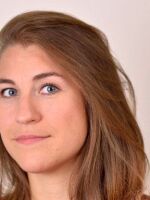A MARTÍNEZ, HOST:
Cardinals celebrated mass in Vatican City this morning.
UNIDENTIFIED CHOIR: (Singing in non-English language).
MARTÍNEZ: It was their final public appearance before going to the Sistine Chapel to select a new pope. There, they will sit beneath the ceilings of Michelangelo's paintings of creation, and closed off from the world, they will vote until they have a new leader. NPR's Ruth Sherlock reports from outside the Sistine Chapel on the history of the conclave.
RUTH SHERLOCK, BYLINE: From here in St. Peter's Square, I can just about see the chimney that's been set up at the Sistine Chapel - the only way, from now on, for cardinals to communicate with the outside world. Black smoke means they need more rounds of voting. White smoke means habemus papam - we have a new pope.
(SOUNDBITE OF BELL TOLLING)
SHERLOCK: But it wasn't always like this. In fact, this will be only the 26th conclave held inside the Sistine Chapel, and there have been 266 popes.
LUCIANO GAGLIANO: The conclave in the past could be organized everywhere, not only Rome, but also outside Rome.
SHERLOCK: Luciano Gagliano works in the immense Vatican Museums, whose 4 miles of galleries, 1,000 rooms and more than 100,000 artifacts connect through hallways painted with Renaissance frescoes to the Sistine Chapel.
GAGLIANO: Behind the window, you can see the Sistine Chapel.
SHERLOCK: As we walk, Gagliano tells us the first conclave happened in 1270 in the Italian town of Viterbo, north of Rome. Cardinals were hosted by the city, but more than a year passed, and still, they hadn't chosen a new pope.
GAGLIANO: So imagine 18 months on which you are spending a lot of money to feed and to house the cardinals. So the people of Viterbo decided to close all the cardinal inside of the Cathedral of Viterbo. They locked the doors. Physically, they made a wall in front of the door so that no one could expect escape. They removed the roof, and they were feeding the cardinals with water and bread.
SHERLOCK: In total, after two years and nine months, Gregory X was selected.
GAGLIANO: The conclave, that is coming from Latin, cum clave - to lock with the key - was officially invented.
(SOUNDBITE OF FOOTSTEPS)
SHERLOCK: We walk through history, passing the Vatican flag that was brought to the moon in 1968 with the Apollo 11 mission, historical maps and ancient compass gauges, until we reach...
GAGLIANO: Now we are in the Borgia Apartment.
SHERLOCK: For the conclaves at the Sistine Chapel, cardinals would stay here.
It's a fantastic high-ceilinged rooms. The paintings here date back to the 1400s. This is the room of the creed. For all the beauty, Gagliano says, staying in these rooms was actually pretty uncomfortable.
GAGLIANO: In this room, there were six beds. So...
SHERLOCK: And with so many to a room, it was smelly, and the snoring under the high ceilings was loud. Few got much sleep. By 1978, the year when cardinals had to stay here for two conclaves, they had had enough.
GAGLIANO: The first dream of John Paul II was to prepare a special space for the future conclaves.
SHERLOCK: Now the cardinals stay in the much more comfortable Santa Marta guesthouse at the Vatican.
GAGLIANO: The Sistine Chapel is completely isolated for the entire duration of the conclave. Everyone has to swear to keep the secret for the entire life.
SHERLOCK: And just to be sure, the Vatican has installed equipment to jam their phones. The cardinals will pray and talk and vote, while millions watch the Sistine Chapel chimney, looking for the white smoke that will signal a new era for the Catholic Church under a new Pope.
Ruth Sherlock, NPR News, Rome.
(SOUNDBITE OF MUSIC) Transcript provided by NPR, Copyright NPR.
NPR transcripts are created on a rush deadline by an NPR contractor. This text may not be in its final form and may be updated or revised in the future. Accuracy and availability may vary. The authoritative record of NPR’s programming is the audio record.


